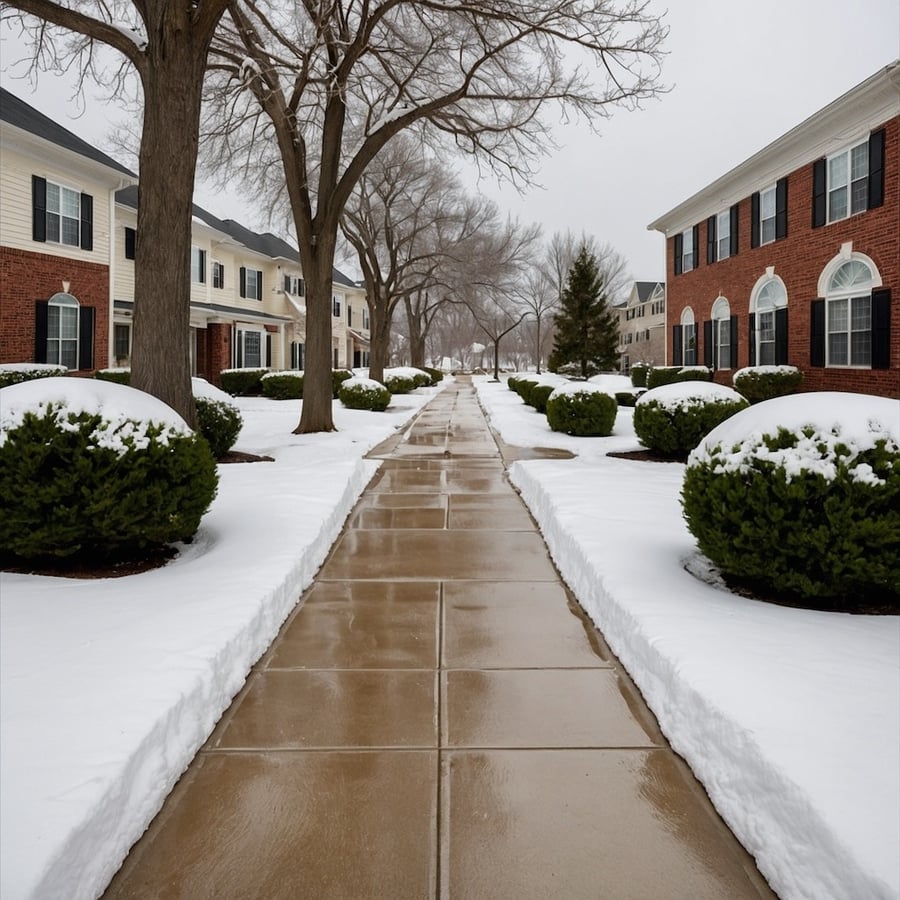Expert Guide to Community Snow Removal: Ensuring Safety All Winter

Hey there! Mike Greene here, and after 25 years of battling Long Island winters, I've learned a thing or two about keeping communities safe and accessible during those challenging snowy months. Trust me, I've seen it all – from the surprise October dustings to those March storms that catch everyone off guard.
Why Professional Snow Removal is Critical for Community Associations
Let me share something I learned early in my career: when it comes to community snow removal, you're not just clearing paths – you're protecting your residents and your association from liability. I remember one particular winter when a local HOA tried to handle their own snow removal. Let's just say their DIY approach led to some slippery situations, both literally and legally!
Here's what makes professional snow removal absolutely essential for communities:
- Legal Protection: Professional services understand and follow local snow removal ordinances, protecting your association from liability.
- 24/7 Availability: Snow doesn't check your calendar before falling. Professional services monitor weather patterns and respond accordingly.
- Proper Equipment: From commercial-grade plows to eco-friendly de-icing materials, professionals have the right tools for every situation.
- Systematic Approach: Every community has its unique layout and needs. Professionals develop custom plans that prioritize high-traffic areas and emergency access points.
Creating Your Community's Winter Management Plan
Here's a secret from years of experience: the best time to plan for winter is when you're still enjoying summer sunshine. I always tell my clients that a solid winter management plan has three key components:
1. Pre-Season Planning
Start by identifying and mapping out your community's critical areas:
- Emergency access routes
- Primary and secondary walkways
- Parking areas and fire lanes
- Storm drain locations (these need to stay clear!)
2. Service Trigger Points
Establish clear guidelines for when services begin:
- Snow accumulation thresholds
- Ice formation conditions
- Pre-treatment requirements
- Response time expectations
3. Communication Protocol
Develop a clear communication system:
- Emergency contact procedures
- Resident notification methods
- Service documentation requirements
- Feedback and adjustment processes
Essential Snow Removal Services for Communities
Having overseen countless community snow removal operations, I can tell you that comprehensive service goes way beyond just plowing. Here's what your community needs:
Pre-Storm Services
- Weather Monitoring: Professional tracking and response planning
- Anti-Icing Applications: Preventive treatments before storms hit
- Equipment Staging: Strategic positioning of necessary equipment
During-Storm Services
- Snow Plowing: Regular clearing of roadways and parking areas
- Walkway Clearing: Hand-shoveling and snow-blowing of pedestrian areas
- De-Icing Applications: Ongoing treatment to prevent ice formation
Post-Storm Services
- Snow Relocation: Moving accumulated snow to designated storage areas
- Ice Management: Continued monitoring and treatment of icy spots
- Documentation: Detailed service records for liability protection
Environmental Considerations in Snow Management
One thing I'm really passionate about is balancing effective snow removal with environmental responsibility. After all, what goes on your pavement eventually makes its way into our local ecosystems.
Eco-Friendly Approaches We Recommend:
- Smart Salt Usage: Calibrated spreading equipment to prevent over-application
- Alternative De-Icers: Using environmentally friendly products when temperatures allow
- Strategic Snow Storage: Designating areas that minimize environmental impact
- Water Management: Planning for proper drainage during snow melt
Integrating Snow Removal with Year-Round Maintenance
Here's something many people don't realize: effective snow removal actually starts with proper year-round property management. That's why at Varello Landscaping, we take a comprehensive approach to property care.
Consider these connections:
- Fall Preparation: Proper seasonal landscaping contracts ensure your property is ready before the first snowfall
- Hardscape Maintenance: Regular inspection and repair of surfaces helps prevent winter damage
- Drainage Systems: Clean and well-maintained drainage prevents ice formation
- Landscape Design: Smart landscape architecture can actually make snow removal easier
Choosing the Right Snow Removal Partner
After decades in the business, I can tell you that not all snow removal services are created equal. Here's what to look for:
Essential Qualities:
- Experience: Look for providers with proven community service experience
- Equipment: Verify they have the right equipment for your property size
- Insurance: Ensure proper coverage for snow removal operations
- Communication: Check their response systems and availability
- References: Ask for testimonials from other community associations
The Cost-Benefit Analysis of Professional Snow Removal
I'll be straight with you – professional snow removal is an investment, but it's one that pays off in multiple ways:
Direct Benefits:
- Reduced liability exposure
- Professional equipment and expertise
- 24/7 emergency response capability
- Documented service records
Indirect Benefits:
- Increased property values
- Higher resident satisfaction
- Lower insurance premiums
- Reduced wear on infrastructure



